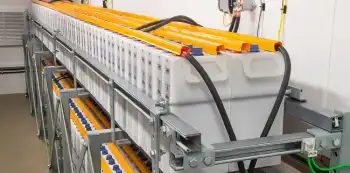Solar energy: a bright spot in renewables
The oil price fluctuations and global warming concerns have sparked a concentrated interest in promoting solar energy applications. In fact, the outlook for the global solar energy market is projected to more than double to reach $70 billion by 2013.
SRI Consulting (SRIC) published its new Materials and Technologies for Solar Energy report that details the solar materials and technologies used in first through fourth generation photovoltaic applications, including an overview of solar thermal.
Solar power, like so many new energy processes, makes demands of chemicals during equipment manufacturing or operations. The first- and second-generation photovoltaic cells require different forms of silicon, rare transition metals and metalloid elements. As a result of increased silicon costs, the third and fourth generation technologies are focusing on organic polymers or nanomaterials and the lower manufacturing costs they offer.
Bob Davenport, Director of the Safe and Sustainable Chemicals series at SRIC commented, “Developments in organic photovoltaic technology have made significant improvements in recent years, with cell efficiencies reaching over 5%. However, silicon based cells in the commercial photovoltaic industry are still the predominant technology because of higher efficiencies reaching over 25%.”
The Materials and Technologies for Solar Energy report explores new applications where solar energy is being applied. Many opportunities exist for companies in the solar energy area from material research to manufacturing where breakthrough developments are being made at a surprising rate. The developments in organic manufacturing pose promising synergies with the printed electronics industry.
The number of specific technologies for producing photovoltaic solar cells is almost as numerous as the number of companies participating in the industry, especially with newer generation technologies. In addition, manufacturers are coming together and establishing standards. The Materials and Technologies for Solar Energy report includes information on key manufacturers and major technologies.
Related News

Warning: Manitoba Hydro can't service new 'energy intensive' customers
WINNIPEG - Manitoba Hydro lacks the capacity to provide electricity to any new "energy intensive" industrial customers, the Crown corporation warns in a confidential briefing note that undercuts the idea this province can lure large businesses with an ample supply of clean, green energy.
On July 28, provincial economic development officials unveiled an "energy roadmap" that said Manitoba Hydro must double or triple its generating capacity over the next two decades in order to meet industrial and consumer demand for electricity produced without burning fossil fuels.
Those officials said 18 potential new customers with high energy needs were looking at setting up…




